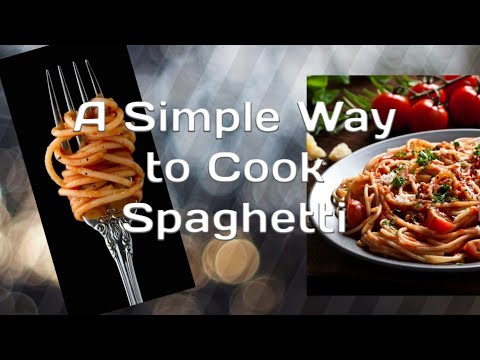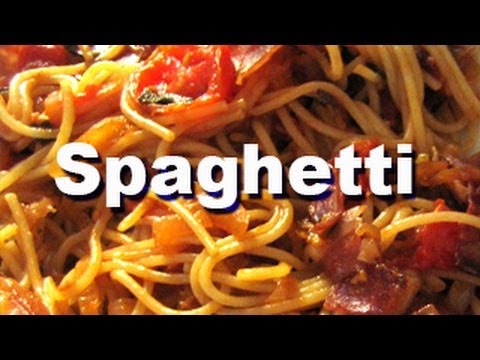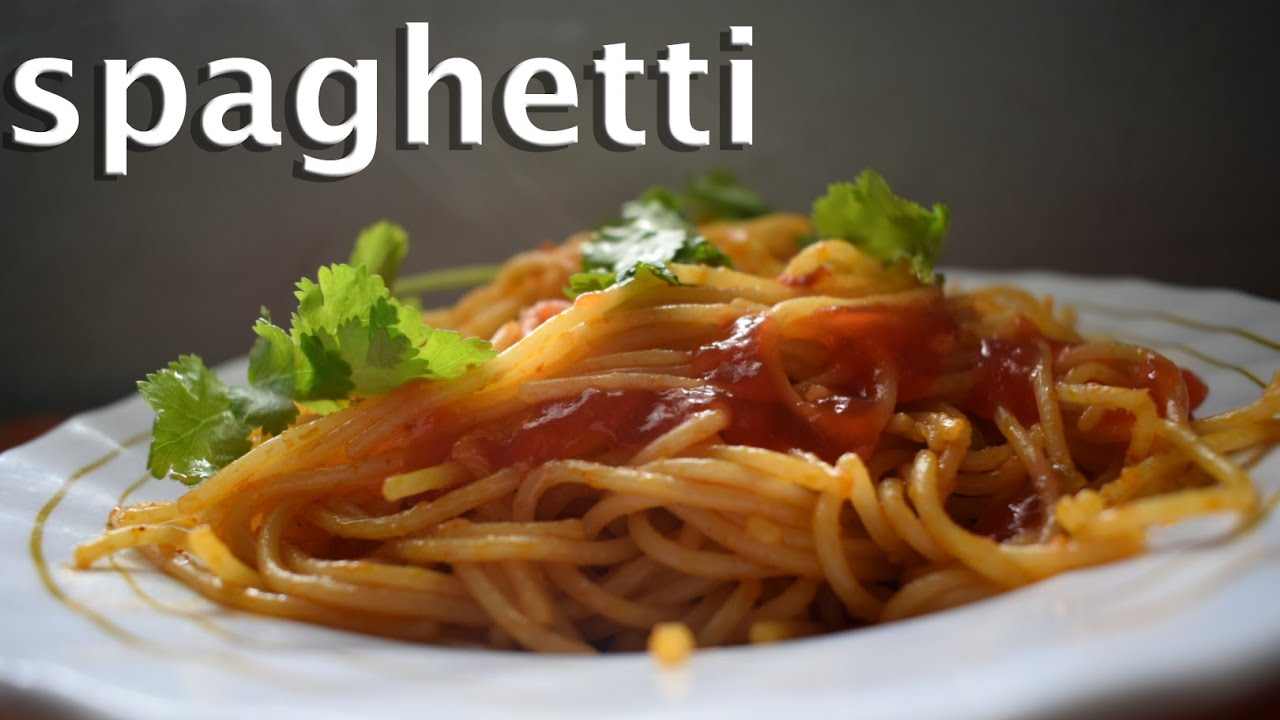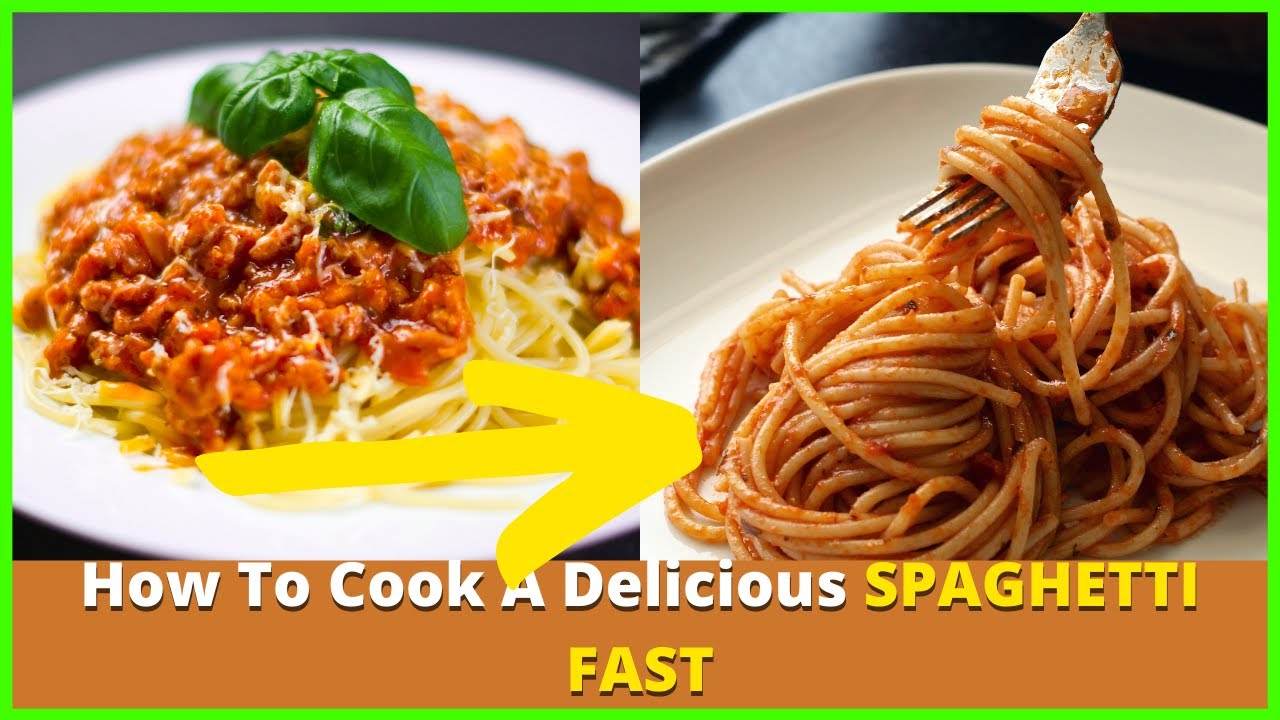Cooking spaghetti is one of the simplest and most rewarding culinary experiences you can have. With just a few ingredients and some basic techniques, you can whip up a delicious meal that everyone will love. Whether you’re a novice in the kitchen or a seasoned chef, mastering the art of spaghetti is a must! Plus, it’s a versatile dish that can be paired with countless sauces, veggies, and proteins.
In this post, we’ll explore the fundamentals of cooking spaghetti and highlight the importance of using the right ingredients to elevate your dish. By the end, you’ll be excited to hit the kitchen and create your own delicious spaghetti!
The Importance of Choosing the Right Ingredients

When it comes to cooking spaghetti, the ingredients you choose can make a world of difference. Let’s dive into why selecting high-quality ingredients is crucial for achieving that perfect plate of pasta.
1. Pasta Quality Matters: Not all spaghetti is created equal! Opting for high-quality pasta made from durum wheat semolina can enhance the flavor and texture of your dish. Fresh or artisanal pasta is often a game-changer, providing a delightful chewiness that dried versions may lack.
2. Fresh Ingredients Enhance Flavor: Using fresh vegetables, herbs, and proteins can elevate your spaghetti to restaurant-quality. For instance, ripe tomatoes for your sauce will contribute a natural sweetness, while fresh basil adds aromatic depth. Consider these fresh ingredients:
- Tomatoes (fresh or canned)
- Garlic
- Onions
- Olive oil
- Fresh herbs (like basil or parsley)
3. Don’t Skimp on Seasoning: The right spices and seasonings are essential. A pinch of salt in your pasta water not only enhances the noodles but also ensures that your dish is well-seasoned throughout. Additionally, consider adding red pepper flakes, Italian seasoning, or a touch of parmesan cheese for that extra flavor kick!
4. Protein Choices: If you’re adding protein, choose wisely! Ground beef, chicken, or even plant-based options like lentils can transform spaghetti into a hearty meal. Don’t forget about seafood options, such as shrimp or clams, for a delightful twist!
Ultimately, the right ingredients can turn a simple spaghetti dish into a culinary masterpiece. So next time you’re preparing to cook, take a moment to ensure you’re selecting the best quality items. Your taste buds will thank you!
Also Read This: How to Wear an Arabic Turban on Dailymotion
3. Step-by-Step Guide to Cooking Perfect Spaghetti

Cooking perfect spaghetti might seem like a simple task, but getting it just right can elevate your pasta dish to another level. Let’s break it down into easy, manageable steps!
Step 1: Gather Your Ingredients
- Spaghetti (about 100g per person)
- Salt (for boiling water)
- Your favorite sauce (like marinara, pesto, or Alfredo)
- Optional toppings (like parmesan cheese, fresh basil, or crushed red pepper)
Step 2: Boil the Water
Start by filling a large pot with water. For every liter of water, add a generous tablespoon of salt. This is crucial as it helps season the pasta from the inside out. Bring the water to a rolling boil over high heat.
Step 3: Add the Spaghetti
Once the water is boiling, gently add your spaghetti. Stir it immediately to prevent it from sticking together. It’s important to keep an eye on the clock to achieve that perfect al dente texture.
Step 4: Cook the Pasta
Most spaghetti cooks in about 8-10 minutes, but it's always good to check the package instructions. For al dente, taste the pasta a minute or two before the recommended time. It should be firm to the bite but not hard.
Step 5: Drain and Rinse
Once your spaghetti is cooked to perfection, drain it in a colander. Rinsing with cold water is usually not recommended as it can wash away the starch that helps the sauce adhere. Instead, let it drain while you prepare your sauce.
Step 6: Combine with Sauce
In the same pot or in a separate pan, warm your sauce over medium heat. Add the drained spaghetti directly to the sauce and toss gently to combine. This helps the pasta absorb some of that delicious flavor.
Step 7: Serve and Enjoy!
Plate your spaghetti, adding any optional toppings you love. A sprinkle of freshly grated parmesan and some fresh basil can make all the difference. Enjoy your homemade spaghetti dish!
Also Read This: How to Do Karate Moves Step by Step on Dailymotion: Master Karate Basics
4. Tips for Enhancing Flavor and Texture

Once you’ve mastered the basics of cooking spaghetti, it’s time to take it up a notch! Here are some helpful tips to enhance both flavor and texture:
1. Use Quality Pasta
Not all spaghetti is created equal. Opt for high-quality durum wheat pasta, which has a firm texture and a better taste than cheaper alternatives.
2. Salt Your Water Generously
Think of your pasta water as the first layer of flavor. It should be as salty as the sea! This will help ensure your pasta is well-seasoned.
3. Save Some Pasta Water
Before draining your spaghetti, save a cup of the starchy cooking water. This can be a game-changer when mixing your sauce with the pasta, helping to create a silky texture.
4. Experiment with Different Sauces
Don’t stick to just one sauce! Try fresh tomato sauce, creamy Alfredo, or even a simple garlic and olive oil dressing. Each brings unique flavors and can completely change your dish.
5. Add Fresh Herbs and Spices
Fresh herbs like basil, parsley, or oregano can add brightness to your dish. Don’t be afraid to experiment with spices too; a pinch of red pepper flakes can add a delightful kick!
6. Finish with a Drizzle of Olive Oil
A good quality extra virgin olive oil drizzled over your finished dish can enhance the flavor and provide a luxurious mouthfeel.
With these tips, your spaghetti will not only be perfectly cooked but also bursting with flavor. Happy cooking!
Also Read This: How to Make a Princess Cake with a Step-by-Step Dailymotion Tutorial
5. How to Find the Best Video Recipe on Dailymotion

When it comes to cooking spaghetti, Dailymotion is a treasure trove of engaging video recipes. But with so many options available, how do you pinpoint the best ones? Here are some tips to help you navigate this delicious digital landscape:
- Use Specific Search Terms: Instead of just typing "spaghetti," try phrases like "authentic spaghetti carbonara" or "easy spaghetti bolognese." This narrows down the results and can lead you to more targeted recipes.
- Check the Video Length: Shorter videos might not cover all the details you need. Aim for videos that are at least 5-10 minutes long; they typically provide more comprehensive instructions.
- Look for High Views and Ratings: A recipe with thousands of views and positive feedback is often a sign that it’s worth trying. Don’t overlook the comments section; users often share helpful tips or modifications.
- Follow Trusted Creators: Some chefs and food bloggers have built a solid reputation. Look for creators who have a consistent style and quality, and consider subscribing to their channels for more recipes.
Finding the right video recipe can transform your spaghetti cooking experience from a mundane task into a culinary adventure. Take your time exploring different recipes and don’t hesitate to try various styles until you find the one that resonates with your taste!
6. Common Mistakes to Avoid When Cooking Spaghetti
Even seasoned cooks can make mistakes when it comes to spaghetti. Here are some common pitfalls to watch out for, ensuring your pasta comes out perfectly every time:
- Not Salting the Water: Many people forget this crucial step! Salting your cooking water enhances the flavor of the pasta. Aim for a saltiness similar to the sea—about 1-2 tablespoons per gallon of water.
- Overcooking the Pasta: Follow the package instructions, but remember that pasta continues to cook even after you drain it. Aim for "al dente," which means the pasta should have a slight bite to it.
- Rinsing the Pasta: Resist the urge to rinse your spaghetti after draining! Rinsing washes away the starch that helps the sauce adhere to the pasta. Instead, toss it directly with your sauce.
- Using the Wrong Sauce: Not all sauces work well with spaghetti. For example, a light olive oil and garlic sauce pairs beautifully with spaghetti, while heavier sauces might be better suited for fatter noodles like fettuccine.
- Skimping on Sauce: The right amount of sauce can make or break your dish. Don’t hesitate to generously coat your spaghetti; it should be glistening and flavorful, not dry.
Avoiding these common mistakes can elevate your spaghetti dish to new heights. Every cook has their own learning curve. Don't be discouraged if things don't turn out perfectly right away; experimentation is part of the fun!
 admin
admin








